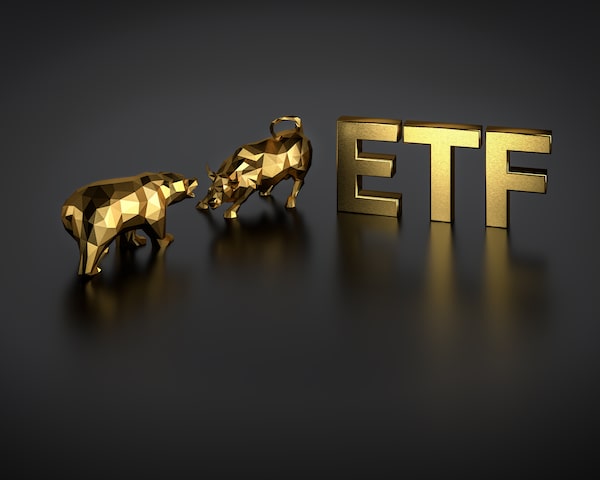
Single-stock ETFs buy derivatives with borrowed money to generate returns that may be double the daily move of the underlying stock.aprott/iStockPhoto / Getty Images
The latest fad to come out of the investment fund space is taking ETFs in a strange new direction.
Traditionally, the great advantage of exchange-traded funds was their ability to combine several – even hundreds – of different stocks in a single package.
But a number of new products have landed on U.S. exchanges that track just one stock, using leverage to magnify daily moves. The funds buy derivatives with borrowed money to generate returns that may be double the daily move of the underlying stock.
There is an ETF that gives investors double the daily return of Pfizer Inc. if its share price rises. Another essentially bets against Tesla Inc., gaining in value when the automaker’s stock falls.
There are now dozens of similar offerings lined up for approval from U.S. regulators, some of which have expressed misgivings about making the instruments of professional traders available to retail investors.
By combining leverage with extreme concentration, single-stock ETFs have the potential to generate ruinous losses in the wrong hands. And while there are not yet any filings with domestic regulators for a Canadian single-stock ETF, chances are they are coming soon to a stock exchange near you.
“The Canadian issuer landscape has proven itself to be very persistent and creative and it wouldn’t surprise me if we saw something similar within the next few weeks,” said Daniel Straus, the director of ETFs and financial products research at National Bank Financial.
There would be some regulatory hoops to jump through for a fund provider to launch a Canadian version.
As it stands, for example, there are concentration limits preventing any one position from accounting for more than 10 per cent of an ETF. But exemptions have been granted. Bank of Montreal has a fund, for example, that gives equal weight to each of the Big Six banks.
Burned by Shopify? Consider shifting to this ‘real-world’ stock
There are likely other workarounds. The Canadian market has long been known as an incubator for innovation in ETFs.
The world’s first ETF, in fact, was introduced to the Canadian market in 1990 – what would later become the iShares S&P/TSX 60 Index ETF. In the years since, Canadian regulators have greenlighted the world’s first bond ETF, the first marijuana ETF and the first cryptocurrency ETF.
The crowded ETF space now gives everyday investors the means to bet on any manner of themes, sectors, styles and factors. Direxion recently launched its Breakfast Commodities Strategy ETF that targets corn, coffee, lean hogs, orange juice concentrate, sugar and wheat.
Relentless evolution has stretched the mandate of the ETF far beyond what was originally intended – broad market exposure with minimal fees.
In a way, single-stock ETFs are the antithesis of the ETF prototype. The idea of an ETF as a short-term speculative instrument is “the late Jack Bogle’s worst nightmare,” Ben Johnson, director of global ETF research at Morningstar, said earlier this year, invoking the name of the Vanguard founder and pioneer of index investing.
The average investor shouldn’t “touch these things with a 10-foot pole,” Mr. Johnson added. The problem is, that’s exactly who these products are designed for.
Many retail investors would find it difficult to access a margin account in order to try to juice their returns through borrowing, or short sell a stock to bet on its decline.
“This explains why single-stock ETFs target retail investors, as opposed to institutional investors, who can access leverage or short sell on their own,” Andres Rincon, head of ETF sales and strategy at TD Securities, wrote in a blog post.
Less sophisticated investors may not understand that these ETFs are designed to be short-term trading tools and are not meant to track their targeted stocks’ returns over the long term. Two weeks ago, William Galvin, the top securities regulator of Massachusetts, launched an investigation of broker dealers that sell single-stock ETFs to retail investors.
But now that the next big thing in ETFs has been established, it’s easy to imagine explosive growth in the category. “With over 4,000 stocks across the U.S. equity market, the potential for new single-stock ETFs is enormous,” Mr. Rincon said.
As for Canada, our “progressive regulatory environment may play a role in levered or inverse single-stock ETFs arriving sooner than we think,” he added.
Be smart with your money. Get the latest investing insights delivered right to your inbox three times a week, with the Globe Investor newsletter. Sign up today.